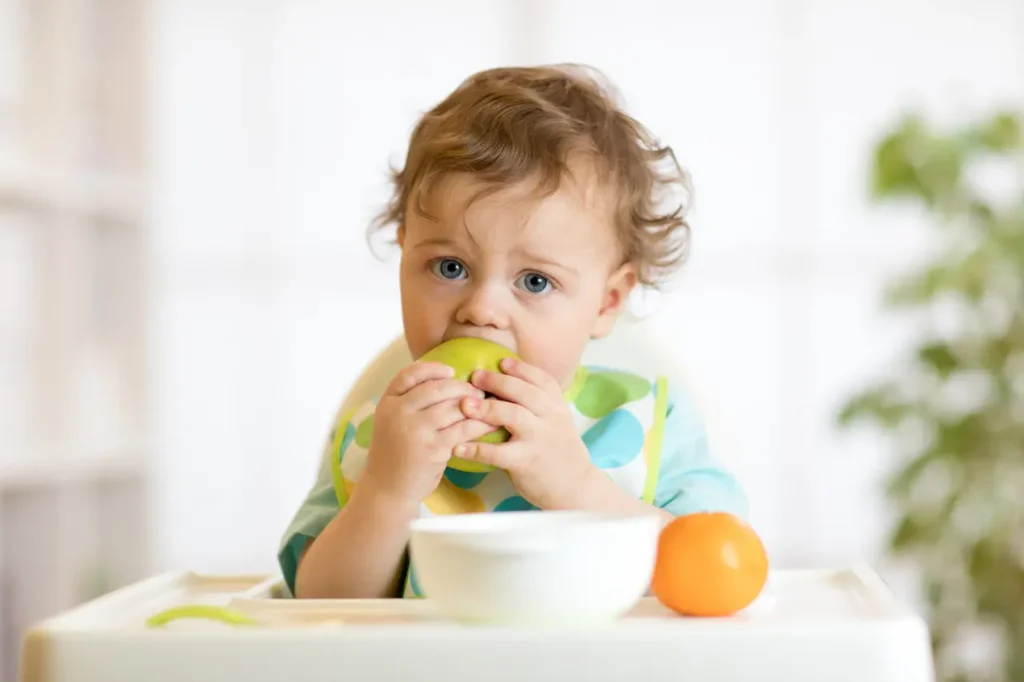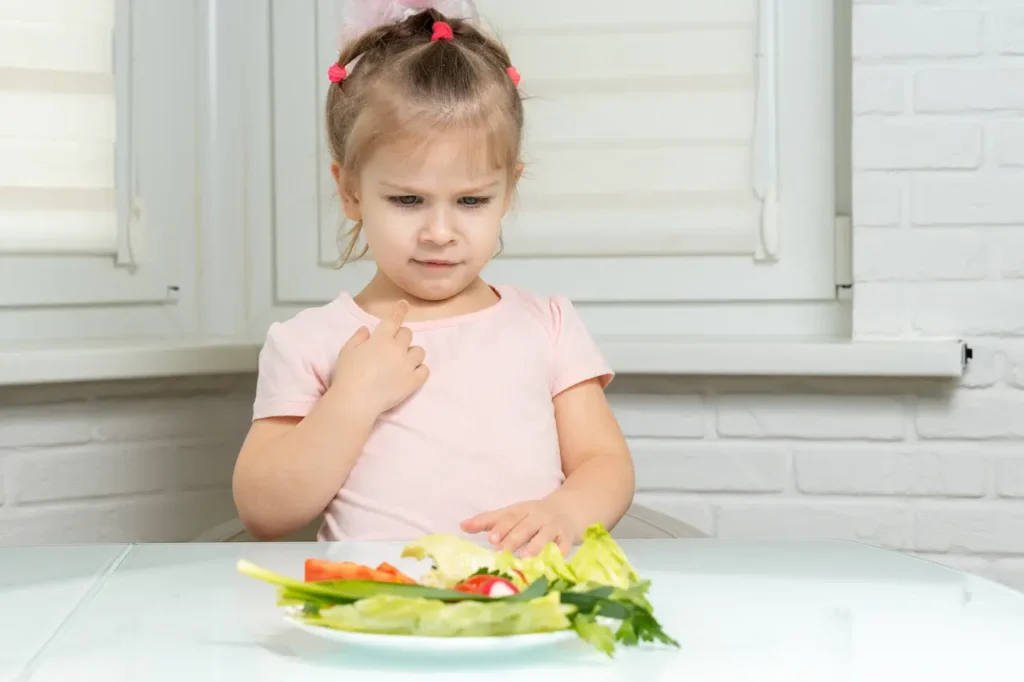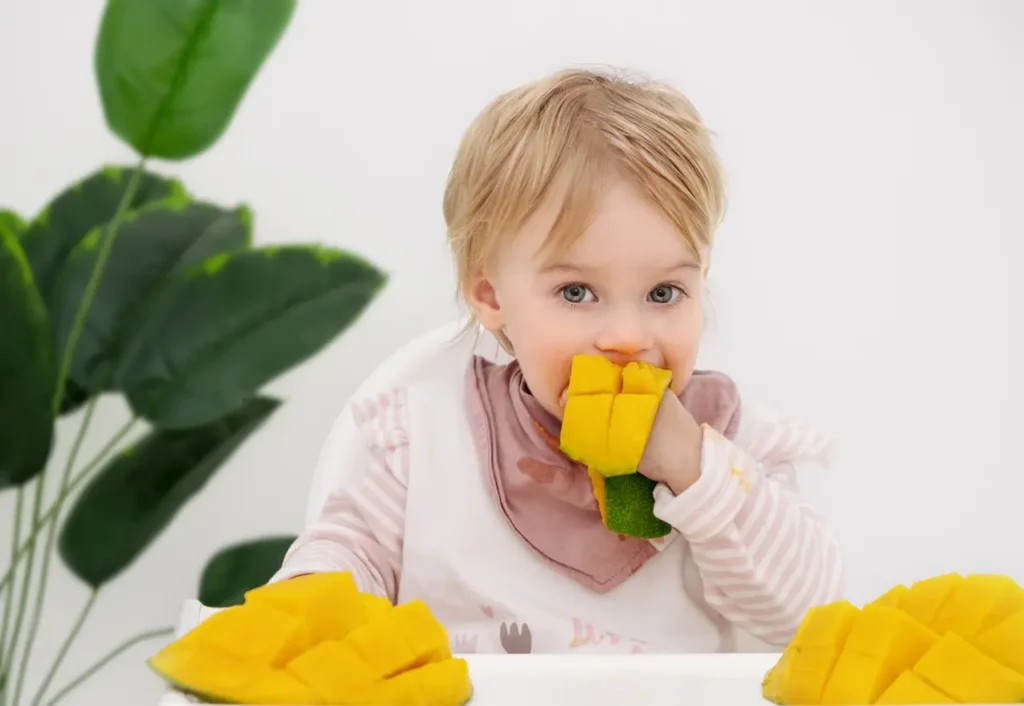Are Toddlers Getting Enough Fruits And Veggies?
Understanding the Importance of a Balanced Diet for Toddlers
What is the Importance of Fruits and Vegetables in a Child’s Diet?
Fruits and vegetables, particularly for growing children, are more than just colorful plates. They are the foundation of a healthy eating plan. These foods are rich in essential nutrients and play an important role in optimal growth. We’ll explore the importance of including fruits and vegetables in your toddler’s diet.
Nutritious Powerhouses
Fruits and vegetables contain vitamins, minerals, and antioxidants which support a variety of bodily functions. These foods contain several key nutrients.
- Vitamin C is essential for skin health and iron absorption. Citrus fruits, strawberries, and bell peppers contain vitamin C.
- Fiber: Helps digestion and prevents constipation. Apples, pears, and broccoli are all rich in fiber.
- Folic Acid is important for brain function and cell division. Leafy greens and beans as well as avocados contain folic acid.
- Potassium: Promotes muscle and heart health. Bananas, potatoes, and tomatoes contain potassium.

Health Benefits
A healthy diet that includes fruits and vegetables has many health benefits.
- Reduced risk of chronic diseases: Regular consumption of fruits and vegetables has been associated with a lower risk of heart disease, obesity, and certain types of cancer.
- Weight Control: These foods tend to be low in calories, but high in fiber. They are satisfying and can help you maintain a healthy body weight.
- Improved Immune Function: Nutrient-dense fruits and vegetables can help your child’s immune system. They will also be able to fight infections and illnesses.
Encouraging Lifelong Habits
Early introduction of fruits and vegetables can help establish healthy eating habits for adults. If parents and children can model healthy eating habits, they will be more likely to consume these foods.
How Much Fruit and Vegetables is Enough?
Knowing the daily intake recommendations for toddlers will help you to set realistic goals. According to Eat For Health, a website of the Australian Government, the recommended intake for toddlers varies by their age. Here’s the simple breakdown:
Daily Serving Guide for Toddlers
| Age | Fruit | Vegetables |
|---|---|---|
| 1-2 | Half serving | 2 to 3 servings |
| 2-3 | One serving | Two and a half servings |
| 4-8 | Serving size: 1 1/2 portions | Four and a half servings |
What Does a Serving Look Like?
Let’s make it simpler by defining what a serving is:
- Fruit (1 serving = 150g)
- 1 medium-sized Apple
- Chop 1 cup of fruit
- Use 1 1/2 tablespoons dried fruit
- Vegetables (75g = 1 serving)
- Half a cup of cooked legumes or vegetables
- 1/2 medium potato
- Salad vegetables – 1 cup
A typical day in the life of a two-year-old could look something like this:
- Bananas are a fruit that serves as a serving size.
- Half a cup of steamed vegetables (1 serving)
- 1 cup of carrot and cucumber sticks (one serving of vegetables).
- Half an avocado is about half a serving of vegetables
The combination will cover all their fruit and vegetable needs. This may seem daunting, but it is easier than you think.
Overcoming Picky Eating
Parents often struggle to get their toddlers to eat fruit and vegetables. This is especially true when the child displays picky eating habits. Understanding the reasons why your child may not eat certain foods will help you to solve this problem.
Common Reasons for Picky Eating
- Texture and Taste Preferences: Children often have a preference for familiar textures and tastes, making them reluctant to try out new foods.
- Independence and Control As toddlers gain autonomy, they might reject certain foods to exercise control over their food choices.
- Food neophobia. This is a phase in which children are hesitant to try new foods, especially fruits and vegetables.
How to Combat Picky Eating
- Introduce Variety Gradually Rather than overwhelming your child with a lot of new choices, introduce just one fruit or vegetable. This can help reduce the anxiety of trying new foods.
- Create an Atmosphere for a Positive Dining Experience: Enjoy your mealtime by engaging in pleasant conversations with your child. Avoid forcing them to eat specific foods as this may create negative associations.
- Celebrate small wins: Praise and reward your child when they try new foods, even if it is only a tiny bite. Positive reinforcement encourages them to try new tastes.
How to Encourage Your Toddler to Eat Their Fruit and Vegetables
It can be difficult to get toddlers to consume their fruits and veggies. Here are some strategies that work:
1. Make Fruits and Vegetables Visible
Keep a bowl with fresh fruit near your child’s kitchen. For quick and easy snacking, fresh produce should always be available.
2. Prepare for the Day
Store vegetables in the refrigerator. Ready-to-eat snack foods encourage spontaneous eating.
3. Sneak the Good Stuff
When possible, add vegetables to your meals. You can add finely chopped vegetables to pasta sauces or soups. Blend fruit puree with yogurt, or sprinkle sultanas over cereal.
4. Serve Up Some Creativity
Bento boxes or fun plates can make your meals more attractive. Make silly faces out of fruit and vegetable pieces, or create fruit kebabs to make a fun presentation.
5. Snacks for the Family
As a family, snack on fruits and veggies. Children will be more inclined to try foods that they see their parents eating.
6. Try Out New Recipes
Encourage your child’s curiosity by encouraging them to try different dishes. For example, bananas on toast or jacket potatoes topped with cheese and baked beans.
7. Reinvent Treats
Offer healthier snacks as an alternative to sugary ones. Serve popcorn without butter instead of chips, or blend bananas with berries and freeze them to make a refreshing treat.
8. Social Eating
Encourage your child to share meals with friends. Children often imitate the eating habits and tastes of their peers, which may lead them to try new foods.
Don’t give up if your toddler still refuses to eat fruits and vegetables. Continue to offer them evdayr y d, ay and their taste may improve.

Participate in Your Child’s Food Choices
Involving your child in their food choices is a great way to promote healthy eating habits. Here are some ways to empower your toddler.
You May Also Like: Delayed Food Allergy Symptoms
Shopping Together
Allow your child to select a fruit or veg they’d like to try when you go grocery shopping. This will give them a sense that they are in control and excited about their food choices.
Gardening Experience
If possible, involve your child in gardening. Growing fruit and vegetables is a great educational and fun activity for your child. It helps them understand where their food comes.
Cooking Together
Allow your child to help you prepare meals. They will feel more included if they can do simple tasks such as washing vegetables, mixing ingredients, or arranging fruits on a platter.
Art and Creativity
Encourage your child by drawing pictures of his or her favorite fruits and vegetables. It will not only make them aware of the foods but also encourage them to try new ones.
Variety is Important
Introduce a variety of fruits and veggies to your child. This will ensure that they get the nutrition they need. Variety is important:
Nutritional Balance
Fruits and vegetables contain different minerals and vitamins. A balanced diet will ensure that your child is receiving the essential nutrients.
Flavor Exploration
Encourage your child to taste different fruits and veggies. This will help develop their palate for different flavors. Exposing children to different tastes at a young age will encourage them to be adventurous eaters.
Preventing Food Fatigue
Boredom can be caused by eating the same food repeatedly. Rotating the fruits and veggies you serve can help keep mealtimes interesting and prevent your child from becoming bored with their food.
Simple Fruit and Vegetable Snacks
Fruits and vegetables can be included in snacks. Here are some suggestions to help you keep the fruits and vegetables coming.
- Corn on a cob
- Jacket potato
- Pumpkin soup, or minestrone
- Plain homemade popcorn
- Vegetables cut up with salsa or yogurt dip
- Muffins and pikelets made from fruit or vegetables
- Frozen fruit or vegetable segments
- Fruit skewers
- Fruit crumble or stewed fruit
- Fruits in juice
- Fruit salad or a fruit platter
Keep Offering
It takes time for kids to learn new tastes. It may take them several times to be exposed to a new fruit or vegetable before they are willing to try it.
Serve a small amount of vegetables at meals and encourage your children to try them without any pressure. It’s fine if they leave certain foods off their plate. They’ll gradually learn to accept whatever is offered.
The Many Forms of Fruits and Vegetables
Fruits and vegetables of all kinds are good for your health. They are essential for health, whether they’re fresh, frozen, or canned. Include a variety of colors, types, and sizes.
- Fresh: Apples, carrots, spinach
- Frozen: Peas, mixed vegetables, berries
- Canned: beans, corn, and peaches in juice
- Dried: Raisins, apricots, banana chips
Seasonal Selections
Fruits and vegetables in season are often cheaper and have a better taste. When fresh produce isn’t available, use frozen or canned alternatives.

Common Challenges with Solutions
Fruit Juices
Fruit juices may provide vitamins ms but they are also high in sugar and have little fiber. Instead, encourage the consumption of whole fruits and limit your juice intake to a half-cup occasionally.
Snacks that are Processed
While they may be convenient, fruit bars and potato chips are usually high in sugar and fat. Instead, opt for homemade snacks or fresh fruit.
Pesticide Concerns
Washing all fruits and veggies will minimize the risk of pesticides, microbial contamination or other contaminants. According to research, the levels of pesticides are low and do not pose a risk to children.
The Key to Supervision is the Ability to Supervise.
Always supervise your toddlers when they are eating to reduce the risk of choking. Sit them down and make sure they are attentive at meals.
Final Thoughts
Encourage your toddler to consume more fruits and veggies doesn’t need to be overwhelming. You can encourage a positive attitude towards these foods by understanding their nutritional requirements, providing healthy options, and being a good role model. You must be patient and keep introducing your child to a wide variety of fruits and vegetables. Join your child on the journey to a healthy, balanced diet.



